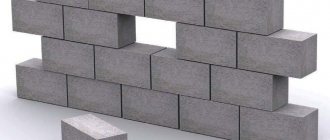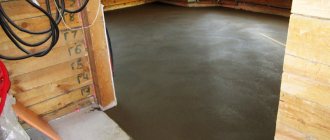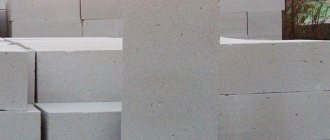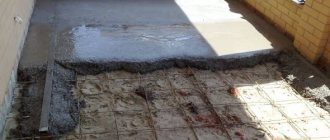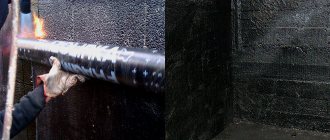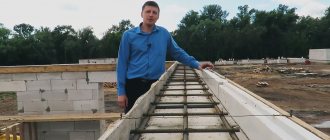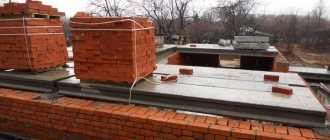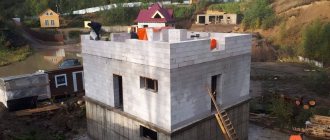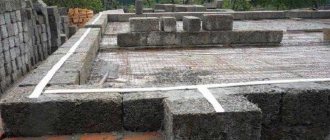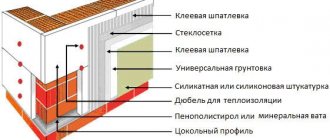Aerated concrete has gained wide popularity in recent years. More and more people are choosing this material to build their homes. It attracts with its affordable price, excellent technical characteristics and technological advantages: working with it is much easier and faster than with brick.
Often, the owner of a new house first of all considers it necessary to install electricity, heating, water and sewerage into the home, forgetting or deliberately relegating the ventilation system to the background. So is ventilation necessary in a private house made of aerated concrete? And if so, which one is better to choose? And how to do it?
You will learn everything about the importance of a ventilation system in a house made of aerated concrete blocks from our article. We will introduce you to the types and specifics of organizing communications that ensure stable standard air exchange. Let's talk about the features of their device.
Why is ventilation needed and what does it affect?
For a comfortable stay of a person in a working/living/utility premises, certain microclimate parameters must be maintained: lighting, temperature, humidity, concentration of oxygen, carbon dioxide, permissible percentage of airborne pollutants, etc.
You've probably noticed that sometimes even at a comfortable temperature we feel stuffy, damp and uncomfortable. Smells from the kitchen or bathrooms scatter throughout the house and do not disappear for a long time, and countless dust particles can be seen in the rays of sunlight. Unfortunately, such situations are familiar to many home owners.
Without a normally functioning ventilation system that ensures regular air exchange, it is impossible to achieve the microclimate parameters required for comfortable and healthy living.
The cause of all these troubles in most cases is improper operation or lack of ventilation system. After all, it is she who is responsible for removing the waste air mass from the room and supplying it with a fresh and clean flow in its place.
Since school, we know that in the process of breathing and life, a person consumes oxygen and releases carbon dioxide and moisture into the air around us. Also, a lot of moisture gets into the air when washing and drying clothes, cooking, wet cleaning, and taking a shower.
It is better to build a ventilation system with risers located in the structures during the construction process. However, if its organization was missed, then it is not too late to do ventilation even after completing the finishing work
We constantly, without thinking about it, bring home dust on our clothes and things. The atmosphere within enclosed spaces is literally teeming with volatile microscopic organic and mineral contaminants and animal hair.
If there is no ventilation system in the house, then all the moisture, dust and CO2 accumulate in the air. At the same time, the amount of oxygen, on the contrary, decreases, making our stay in the room unbearable. If you ignore this state of affairs for a long time, problems with well-being and health may arise.
Regular air exchange is carried out by the intake of air from the street through the supply components and the removal of exhaust air mass through the hood
Without stable air exchange in a house with walls made of aerated concrete blocks, condensation will not be removed in a timely manner. As a result, a fungus will settle in building structures, destroying both building materials and the health of the owners and household members.
Why is ventilation needed?
Before the advent of plastic windows, suspended ceilings and vapor-proof materials for wall decoration, there was practically no need for forced ventilation of rooms. Fresh air entered the house through cracks and leaks in wooden frames, and excess moisture was absorbed by wooden or brick walls and gradually removed outside.
Modern materials make our lives easier and more comfortable, but at the same time they cause new problems. One of them is faced by owners of aerated concrete houses that do not have a ventilation system.
Since this material has a high absorption capacity, homeowners do not forget about protecting external walls from atmospheric moisture by finishing them immediately after construction. But aerated concrete easily absorbs excess moisture from the interior, which leads to deformation of the finishing layer, the appearance of mold, and the creation of an unfavorable microclimate in the house.
One of the consequences of improper or absent ventilation
This can be avoided if you do not allow the air to stagnate by installing a high-quality ventilation system.
Sanitary standards for ventilation
Unlike private developers, employees of design organizations and sanitary doctors are well aware of the importance of air exchange in residential buildings. Therefore, along with heating, water supply, and lighting, entire sections of regulatory documents are devoted to ventilation.
Here are some of these rules:
- SP 13330.2016 Heating, ventilation and air conditioning. Updated version of SNiP 41-01-2003;
- SanPiN 2.1.2.2645-10 “Sanitary and epidemiological requirements for living conditions in residential buildings and premises” (Section IV. Hygienic requirements for heating, ventilation, microclimate and air environment of premises);
- “ SNiP 2.08.01-89* . Residential buildings” (Section 3. Heating, ventilation and air conditioning. Appendix 4 (mandatory). Design air parameters and air exchange rate in residential buildings).
Briefly, the requirements of these rules look like this:
- All residential buildings must have a ventilation system;
- The ventilation system must ensure the replacement of exhaust air with fresh air at established intervals;
- Air exhaust from the premises of a residential building should be provided through the exhaust ducts of kitchens, restrooms and bathrooms (showers).
But the following standards for the amount of air removed are established by the rules:
| Room | The amount of air removed from the room |
| Living room | 3 m3/h per 1 m2 of room |
| Kitchen with electric stove | Not less than 60 m3/h |
| Kitchen with 2-burner gas stove | Not less than 60 m3/h |
| Kitchen with 4-burner gas stove | Not less than 90 m3/h |
| Bathroom | Not less than 25 m3/h |
| Restroom | Not less than 25 m3/h |
| Combined bathroom and toilet | Not less than 50 m3/h |
Let's calculate the volume of air exchange for a two-story house with four rooms with a total area of 80 m2, two combined bathrooms and a kitchen with a 4-burner gas stove:
Standard for rooms = 80 m2 * 3 m3/h per 1 m2 of room = 240 m3/h;
Standard for kitchen = 90 m3/h;
Standard for bathrooms = 2 bathrooms * 50 m3/h = 100 m3/h.
TOTAL: 430 m3/h.
It is precisely this kind of air exchange that needs to be ensured in our conditional home for comfortable well-being and maintaining the furnishings and finishing in proper condition.
The ventilation system must remove and supply exactly the volume of fresh air required by sanitary standards. Too intense air exchange can reduce the humidity necessary for breathing, which will have to be restored mechanically
Concluding the topic of standards, it should be noted that it is important not only to achieve standard air exchange, but also not to overdo it. After all, the greater the air exchange, the higher the speed of air flow through the premises, and if its values are excessive, negative phenomena can occur - drafts.
What to consider when drawing up a ventilation project
When drawing up the general design of a building, you need to calculate the diameter of the pipes, their number, the placement of openings for input and output, as well as determine the power of the fans and their installation locations. This work should be entrusted to specialists, since improper placement of ventilation ducts can lead to the accumulation of moisture in certain places, dampness of the walls, fogging of windows or the appearance of drafts.
For each building, especially those created according to an individual project, ventilation must be planned and created separately. It is important to consider the following factors:
- Area and number of floors of the building, height of each floor
- Climate in the region
- Roof structure, type of attic and method of heating it
- Location of rooms and their purpose
- Permeability of doorways (presence of cracks in them) and window systems
- Estimated temperature in the house
- Number of residents
- As well as many other parameters that affect air exchange in the room
Particular care must be taken to plan natural ventilation systems in a building. Incorrect calculation and placement of pipelines will make it inoperable. Although everything is somewhat simpler with forced ventilation, it creates unnecessary noise and requires more installation costs.
Ventilation schemes for aerated concrete houses
In general, ventilation systems can be divided into two main groups - natural and forced (mechanical).
The natural scheme works due to the temperature difference and the density of the air mass inside and outside the building. It is completely autonomous and operates regardless of the electricity supply. However, the closer the outside temperature is to room temperature, the worse the air exchange will be, up to a complete stop.
This is especially felt in the summer. Achieving high performance with natural ventilation is problematic. Moreover, if it is designed according to the channel principle with numerous turns and bends: the more complex the circuit, the weaker the thrust will be;
The mechanical circuit is much more powerful than the natural system. It is often equipped with additional functions of heating or cooling air, a heat saving function (recovery), and the ability to integrate into the Smart Home system. This ventilation works regardless of temperature changes.
What both types of systems have in common is that it is advisable to think through both natural and mechanical ventilation at the design stage of a house and install it immediately during its construction.
Why is it important? Because the ventilation system, in most cases, is a network of metal or plastic air ducts that must be laid from the premises and brought to the roof.
One of the most popular ways to organize duct ventilation in houses made of aerated concrete is to lay them under the upper ceiling. The system is covered with suspended or suspended ceilings so that only the grids of supply and exhaust openings are visible
If you do not immediately take into account all the nuances of installation, then installing ventilation in the future may be associated with many difficulties (punching or drilling holes in main walls and ceilings, the need to lay pipes from the premises of the first floor through the living rooms of the second, unsightly appearance, etc.).
Despite the apparent complexity, it is quite simple to understand the organizational issues in order to install ventilation in an aerated concrete house with your own hands or correctly order its installation without overpaying for equipment and work.
So, let's move on to the types of ventilation.
Subtleties of natural ventilation devices
We have already figured out that the force that makes natural ventilation work is the desire of warm air to rise upward. In order for such movement to begin, an air duct is needed to allow warm air from the room to exit to the colder street.
Air ducts are made of plastic, galvanized metal or stainless steel round pipes or profiles of square or rectangular cross-section. Ventilation ducts can also be made in the form of voids in the walls during their construction.
If the above pipes are laid in such voids, this is called lining; this method is widely used, as it eliminates leaks in the masonry and facilitates maintenance.
With natural ventilation, the air ducts are made vertical and as straight as possible, and the number of turns and horizontal (sloping) sections is minimized, as this reduces draft. Also, for better traction, you cannot narrow the diameter of the pipe.
The ventilation risers of the exhaust part of the natural type ventilation are installed above the roof to a height equal to the height of the chimneys. If the distance between the ridge and the ventilation pipe is less than 1.5 m, the pipe must rise above the ridge ridge by at least 0.5 m. This is necessary to form a stable draft
The exhaust openings are equipped with ventilation grilles. They are installed in the upper quarter of the walls or directly under the ceiling, since this is where the air rises and requires removal.
Air flow in natural ventilation schemes occurs through leaks in building structures, windows and doors, as well as through special supply openings located at the bottom of the house.
Plastic windows and safe doors practically do not allow air to pass through. Therefore, when installing natural ventilation in modern housing, the presence of inlet openings or valves is a prerequisite for the operation of the ventilation system.
The simplest solution is to install windows with ventilation valves. They will allow the flow of fresh air into the room without making additional holes.
To equip a house made of aerated concrete, it is better to buy double-glazed windows with a built-in micro-ventilation system. This way it will be possible to ensure a continuous flow of fresh air into the house without noticeable drafts
But don’t despair if the windows in your house are installed without such valves. For these cases, devices built into walls are offered on the market. They have a significantly higher throughput capacity than window ones, and can also be equipped with filters, which allows the air to be purified before it is supplied to the home.
It is worth remembering that wall valves cannot ventilate a room on their own. For them to work, the built-in exhaust or supply fan must be working. The valves simply allow air from the street to pass through them and allow you to regulate its flow by opening or closing the damper.
Wall ventilation valves are divided into supply and exhaust. Supply models are equipped with devices for air flow filtration. Among them there are models with devices for heating the flow
Natural ventilation is good because of its simplicity, low cost and energy independence. It is easy to install it yourself. It can be an excellent solution for small homes.
Nuances of organizing mechanical ventilation
The difference between a mechanical ventilation system and a natural one is that the air is driven by electric fans. Thanks to this, mechanical ventilation can have a complex and long system of ventilation ducts with both vertical and horizontal sections.
Pressure losses in duct versions of mechanical ventilation are compensated by increasing the fan power. This allows you to install air ducts in all the necessary rooms without worrying about the lack of draft.
The mechanical version of the ventilation system is completely independent of the temperature and density of the air outside the window and indoors. Its design includes fans that force air in or remove air through exhaust components
Another distinctive feature of a mechanical ventilation system is the ability to automate it. Thanks to the installation of fans with multi-stage speed control, as well as other devices that regulate the speed, direction of air flow and its temperature, mechanical ventilation allows you to achieve optimal air exchange in each room.
It is more profitable to equip a private house with a mixed ventilation system, which contains components of both gravity and forced type. In these schemes, air movement is stimulated by a fan mounted either in the supply part or in the exhaust part.
Mixed ventilation schemes use both gravitational principles and mechanical devices. Either supply or exhaust is carried out by a fan
Mechanical and mixed ventilation can be local or centralized.
With a local ventilation system , each room from which air is removed has its own fan installed. A typical example is a kitchen hood and a fan on the exhaust vent in the bathroom.
The exhaust components of both natural and mechanical ventilation systems are located at the top of the wall because contaminated warm air spontaneously moves upward
This solution is often used if for some reason the natural ventilation draft is not enough and it needs to be increased. Installing local exhaust fans is a low-cost method that you can do yourself.
Both for the natural scheme and for mechanical exhaust ventilation, it is necessary to have air flow paths through leaks, or through special supply openings or valves.
With a centralized ventilation system in the house, usually in the attic, an exhaust or supply and exhaust ventilation unit is installed. Further from this unit, ventilation ducts are laid into the necessary rooms, removing exhaust air, and if the installation is a supply and exhaust system, then supplying fresh air.
It is better to install the supply and exhaust ventilation unit outside the living space, as it can make noise during operation. Ideally, a non-residential attic should be used for its placement.
Supply and exhaust ventilation units are equipped with two fans and ensure equal amounts of incoming and outgoing air. Also, such installations can be equipped with heating and filtration systems for incoming air and automation, which allows maintaining the specified temperature and air exchange parameters.
Ventilation units with recovery are equipped with a device that increases the economic effect of using the equipment. This is a recuperator that provides the opportunity to rationally manage the energy of heating systems and save on utility bills.
With any other type of mechanical ventilation, heat is simply released from the room to the street along with the exhaust air! Savings from ventilation with recovery are especially important in winter, when a lot of thermal energy escapes into the ventilation pipe. At the same time, the cold air it receives from the street in return also needs to be heated to room temperature.
The recuperator is a heat exchanger through which warm air from the house and cold air from the street simultaneously pass. A number of recuperator models use additional plate heaters with freon or water.
In ventilation systems with a recuperator, warm air from the room is cleaned and mixed with a fresh portion captured by the fan from the street
Thus, fresh air is heated not by heating or electricity, but by previously heated air removed from the room. Heat losses when using a recuperator are minimal.
In warm weather, when it’s hot outside, the recuperator is also useful: in this case, it cools the hot air coming from the street with cooler air from the room, reducing air conditioning costs.
Recuperation is a technological process for reusing thermal energy, which can significantly reduce the cost of preparing outdoor air pumped into the premises by ventilation
Unfortunately, despite its obvious advantages, recovery has two disadvantages:
- Firstly, ventilation units with recovery are many times more expensive than similar units without a recuperator;
- Secondly, recuperators can operate stably only when the outside air temperature is not lower than – 10 °C. At colder temperatures, the plates become covered with an ice crust.
However, even with its shortcomings, the recuperator is the best solution for systems that process all rooms in the house. Among the local options, the breather is the leader.
A breather is a device for ventilation in a separate room. It consists of a ventilation duct and a housing in which are installed: an electric heater, a fan, filters, blinds and automatic control.
For ease of setup, breathers may have a remote control. Some breathers are equipped with a ceramic heat exchanger, which allows them to operate in recovery mode.
A breather is a fairly effective miniature local ventilation unit that heats and cleans the air flow
Breathers forcefully pump fresh air into the room, pre-filtering it and, if necessary, heating it. Models with a heat exchanger are capable of not only pumping air into the room, but also removing old air from it.
In a house made of aerated concrete, installing breathers and valves yourself is not difficult: you just need to drill a hole of a suitable diameter in the wall for the ventilation pipe and secure the device to the wall.
Air purification in ventilation
At the beginning of the article, it was mentioned about dust flying in the air due to improper or absent ventilation. To solve this problem, modern supply ventilation systems can be equipped with special filters to clean the air entering the room from the street.
Moreover, depending on your needs, the set of filters can be different: from coarse cleaning, which retains only large particles; to a fine cleaning that does not allow even odors and pollen to pass through.
To equip ventilation systems, filters of various levels are produced. Among them there are models for coarse and fine cleaning, holding animal hair, screening out viruses, etc.
Filters have only one drawback: they need to be changed periodically.
Chimneys of stoves and fireplaces in residential premises
If you are planning or already have a stove or fireplace in your home, then when calculating ventilation you need to keep in mind that the chimneys of stoves and fireplaces are actually also exhaust ventilation.
In a cold state, chimneys work like a regular natural exhaust, and when burning wood, this effect is enhanced significantly, since a large amount of air is consumed for combustion.
And although chimneys cannot fully perform the function of exhaust ventilation, their presence must be taken into account when determining the size of the supply openings so that they can provide the required supply of fresh air both for the operation of the main ventilation and for the operation of the heating device.
Forced ventilation
Such a system will be more expensive to install and operate due to the use of electricity and special devices for forced air circulation.
But their price is compensated by greater ventilation efficiency and improved home microclimate.
- The air ducts in such a system are equipped with exhaust fans, and air from the street is supplied through its network of channels.
- To ensure that the temperature regime in the premises is not disturbed in cold weather, the ventilation system is equipped with units for heating outdoor air.
- The most economical option in this case is to use not an electric heater, but a heat recuperator. This is a heat exchanger with two fans - supply and exhaust, in which fresh air is heated from the heat of gases removed from the house.
The principle of operation of the recuperator
For reference. When using systems with a recuperator, heat loss in a heated building is reduced by 20-30%.
Typically, the recuperator is installed in the attic of a house and connected to a common duct, which combines air ducts from all ventilated rooms. Access to it must be free, as it requires maintenance - cleaning the plates when the seasons change and replacing filters.
Recovery unit in the attic
Personal installation of the ventilation system
Now on the Internet there is any information about the selection and installation of ventilation systems, which you can easily build with your own hands in a house made of aerated concrete. In a hardware store you can freely buy ventilation ducts, fans or serious ventilation units.
Various methods are used to mask ventilation ducts. The most popular location is behind a false wall or in a plasterboard box.
The only thing that is better to entrust to designers is the calculation of ventilation, because it is unlikely to be possible to do it yourself without having the knowledge.
Correct calculation is especially important if you plan to use natural ventilation, because in this case it is important to correctly select the number and cross-section of ventilation air ducts so that they provide the necessary draft and air exchange.
If you plan to install mechanical ventilation, then an approximate calculation of its performance can be made based on standards, as in the example indicated at the beginning of this article. To do this, you need to calculate the standard ventilation value for your home and increase this value by 10-20% to compensate for losses when air moves through the ventilation ducts.
As for the installation of ventilation itself, for people who build a house with their own hands, this is usually nothing complicated.
Ventilation ducts are assembled like a construction set, when one part is freely inserted into another. A large number of lengths, shapes and sections of channels, as well as various bends, tees, transitions, valves, gate valves and other products allow you to assemble a ventilation duct of any configuration.
The construction of a ventilation system will be much faster if you use a set of parts designed for this purpose.
Also, thanks to standardization of sizes, ventilation ducts can be easily connected to a wide variety of supply, exhaust and supply and exhaust mechanical ventilation installations.
By the way, the choice of such installations and their manufacturers is also large: from budget ones with simple functionality to premium ones with full automation.
Main factors when calculating natural ventilation
For normal operation of natural ventilation, the following must be taken into account.
Supply air ducts should be located in living rooms, bedrooms, and other non-household rooms.
Fresh air must enter them through asbestos-cement or plastic pipes passing through the interior walls or in special shafts. Exhaust air ducts are placed in service areas - in the bathroom, kitchen, and toilet. They are directed to the attic, where they are combined into an insulated pipe that goes outside above the roof. The exit to the outside is covered with a special “fungus” that protects from precipitation- In an aerated concrete house, ventilation channels can be installed in the reinforcement belt.
This makes them easier to carry out, but makes it difficult to repair or replace. The ventilation inlet and outlet should be located at a large distance, preferably in different rooms. For more efficient gas exchange, ventilation ducts can be placed above the stove or heating devices (radiators). Ventilation in office spaces (dressing rooms, storage rooms) occurs due to the gaps under the door leaf - Natural ventilation systems do their job well at steady temperatures, warm or cool. But in hot or cold weather they may not be able to perform their functions. In hot weather, warm air is difficult to remove from the room, and in cold weather the system works with too much intensity
Conclusions and useful video on the topic
The following video will introduce you to the features of the air exchange system in a house made of aerated concrete:
Properly selected and installed ventilation in a gas block house is the key to the well-being and health of household members. Natural ventilation is suitable for small houses, but for large buildings with many rooms, a mechanical system is the best solution.
You can select and install ventilation either independently or by entrusting it to builders, but in both cases it is recommended to do this at the design (planning) and construction stage of the house.
Do you want to share your own experience in installing a ventilation system in a house made of aerated concrete blocks? Please leave comments in the form below. In it you can ask questions, post photos on the topic of the article, and give useful recommendations to site visitors.
Natural (passive) ventilation
In order for the passive ventilation of a house made of aerated concrete to work properly, you need to make some efforts.
Namely:
- Install channels to remove dirty and humid air from the house. In order for it to extend itself, these channels must extend to the roof of the house to a certain height. If they are one and a half meters away from the ridge, then they should be 50 cm higher than it. At a distance of up to 3 meters, the head of the channel can be flush with the ridge. And if this distance exceeds 3 meters, the top of the channel should not be below a line drawn from the ridge at an angle of 100 to the horizon. Violation of these requirements causes poor traction or even its “capsizing”.
Scheme of ventilation ducts output to the roof
Advice. It is necessary to install an umbrella at the top of the exhaust pipe to protect against precipitation or a deflector to improve the functioning of natural ventilation.
- Provide fresh air flow. Sealed plastic windows practically do not allow it into the house, but you can find a way out. For example, install window units with supply valves or ventilators built into external walls.
Advice. If the ventilators are installed directly under the windows, the air coming from the street in winter will be heated by the heat coming from the heating radiators.
Installation of ventilation ducts
When deciding how to make ventilation in a house made of aerated concrete, special attention should be paid to the design of ventilation ducts. Taking into account the fragility of the material, its ability to absorb moisture and instability to high temperatures.
Note. Air ducts for ventilation in houses made of aerated concrete are not recommended to be laid in external walls due to the formation of condensation in them, which reduces the heat-saving properties of the material. It is better to arrange them in partitions or separate ventilation shafts.
Ventilation ducts in aerated concrete houses are built in one of the following ways:
- Laying out a brick channel;
- Lining with asbestos or plastic pipes;
- Installation of a galvanized steel box lined with small-sized aerated concrete blocks.
The latter method is rarely used due to its labor intensity and high cost. In addition, condensation forms on the walls of metal structures, which is detrimental to aerated concrete, so such channels need to be additionally insulated.
Brick ventilation ducts
If you decide to lay ventilation ducts out of brick, the following instructions will be useful to you:
- The fewer such channels in the house, the better. Therefore, it is advisable to install them in the walls of adjacent rooms with high humidity (boiler room, laundry room, bathroom, kitchen). As a rule, they are located nearby, as they are united by a common water supply and sewerage system.
- For masonry, you can use only solid bricks or hollow ones, but fill all voids with mortar.
Note. Sand-lime brick is not used for these purposes, since it does not easily withstand the temperature regime formed inside the ventilation duct, and begins to crumble.
- It is very important to carefully apply the solution, preventing the mixture from falling into the canal. The seams should be filled completely and rubbed down every 2-3 rows of masonry so that exhaust air does not penetrate into adjacent channels and rooms.
- The walls of the channels inside should be as smooth as possible so that the protrusions do not interfere with the free circulation of air. Therefore, excess mortar from the joints must be constantly removed and the surface smoothed with a trowel. Or the brick channel is lined with a metal air duct during the laying process.
Note. Mechanical devices must not be installed in brick ventilation ducts.
Lining with plastic pipes
For a forced ventilation device, this method is considered the most effective, since practically no condensation forms on the plastic.
As a rule, round pipes with a diameter of 13 cm or rectangular pipes with a cross-sectional area of 150 cm2 are used for its installation. The cross-section of channels for natural ventilation should be larger.
But these are approximate data. To accurately calculate the size of air ducts, you need to know the volume of air being exhausted, the number of people living in the house, take into account climatic conditions and other parameters. This is a task for specialists.
The installation of ventilation in a house made of aerated concrete is carried out in parallel with the construction of walls.
- An outlet is attached to the block located at the level of the ventilation hole and connected to a plastic pipe.
- To bypass the air ducts in the blocks during further laying, holes are cut out that are several millimeters larger than the dimensions of the pipes. Aerated concrete is very easy to saw with a regular hacksaw.
- The space between the walls of the blocks and the air ducts is filled with a solution. As the height of the masonry increases, the pipes are joined to each other, growing upward.
- Where pipes pass through the attic and roof, they must be insulated.
At the attic level, individual air ducts are combined into one duct and led through the roof to the street or connected to a duct fan or heat exchanger. All openings with channel outlets in the walls are sealed and sealed.
